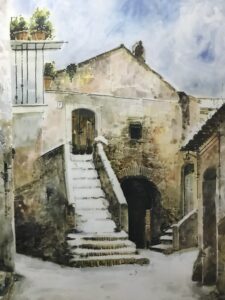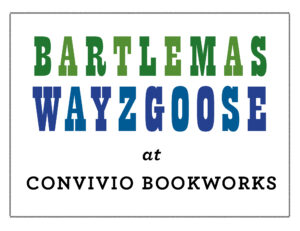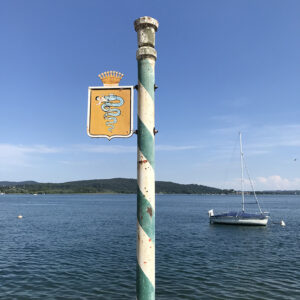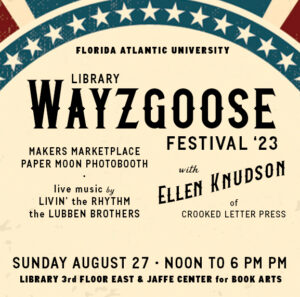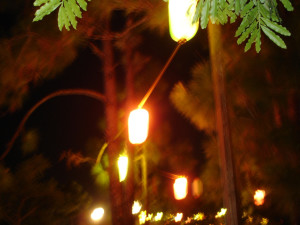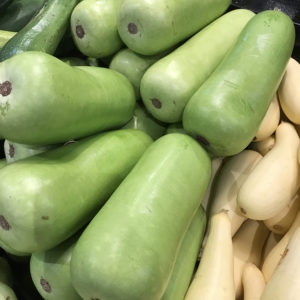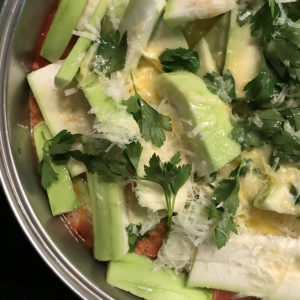My mom took a fall yesterday, and she is fine––just a bit achey here and there––but I leapt into Adrenaline Mode when I heard she was on the floor and I immediately drove out there to get her up off the ground. It was a feat I somehow managed to successfully pull off after rigging up a system of folding chairs for Mom to lean upon as my sister held one chair steady and another fell by the wayside as I got Mom on her feet again with my arms under hers. I got to hold her there for a while, a simple hug of sorts, and then, once she knew she was steady, she sat down in her favorite chair, which was right behind her. She was watching the Mass on TV a moment later, from Irondale, Alabama, a place she once visited, eating fruit salad that my sister had prepared for her, and when I called from work a couple hours later, Mom was already back to her embroidering. When I say my daily prayers as I drive––a practice I took up several years ago to stop myself from cursing and swearing so much on the road––I always have a long list of petitions for Mom, not the least of which being, “Please keep Mom steady on her feet. Please protect her from falls.” When your mom is 97, these are the things you do.
Before I left, as Mom was eating her fruit salad, I asked if she wanted the rest of her breakfast, which is usually the same each day: half a bagel, toasted, with peanut butter and jam, and coffee. She said, “No, just the fruit.” She was still a bit shaken up from her fall. “Ok,” I said, “but we’ll go to Cosa Duci tomorrow.” Mom smiled, and nodded yes. “Cosa Duci,” she said.
That tomorrow, as you read this, is today: the Fifteenth of August. It is her mother’s birthday: my grandma, Assunta, who was named for the day on which she was born, the Feast of the Assumption, in 1898 in Lucera, Italy, the land of our ancestors for centuries, since time immemorial, at least to the 1600s, and, safe to say, for ages before, as well. We are going to Mom’s appointment with her doctor first (the appointment was set months ago, long before yesterday’s fall), and then yes, to Cosa Duci, a little Italian place that is one of our favorites, run by Silvia Fausto. Silvia’s mother, Giovanna, opened the place years ago. Giovanna was from Sicily and put green peas in almost every dish she cooked. Silvia lost her Giovanna in the past year, and she and I have cried together over that, and still we joke about the green peas. “Always with the peas!” Silvia laughs. And so we laugh and we cry and we laugh again.
My sister will be cooking the dish that Grandma loved for her birthday: It is a Ferragosto supper (click for the recipe) of cucuzza longa simmered on the stove together with eggs and parsley and tomatoes and grated Parmigiano-Reggiano cheese. It is a one-pot meal perfect for a summer’s evening, especially this one, for it is traditional (at least in Lucera) to serve this for the Feast of the Assumption. It is hearty peasant fare (my favorite kind of meal) served drizzled with fresh olive oil, a crusty loaf, and a little bicchiere di vino. The wine, if you have someone like my Grandpa in your life, will be red wine, poured over a pitcher full of the finest sliced summer peaches and set in the refrigerator for just a few minutes before dinner is served.
And Ferragosto? This is the Italian summer holiday that begins now, at the Feast of the Assumption. The waters today are blessed by priests and so most Italians close up shop and head to the sea on this Fifteenth of August, some to soak their aches and pains in the blessed waters and others just to swim or float or get a suntan. One thing is certain: work is not to be a priority today.
And so today will be our Ferragosto as we remember our Assunta, my mom and sister at the table with me, Grandma and Grandpa and Dad in our hearts together with all the others we love and miss, at Cosa Duci with Silvia, where we also miss Giovanna. Her name is the female version of my own, and I think about that connexion we have, one of nomenclature, but also one of food and family. All these things I appreciate, all these things I love, all these things make my heart open and open.
Image: A painting, at my Mom’s cousin’s Romeo’s house in Oleggio, Italy, of our ancestral home in Lucera. This is the house on Vicolo San Gaetano where my grandmother Assunta was born, and it is the house she and Grandpa lived in after they married, and where my mom’s older sister Anne was born before the family moved to America.
JOIN US, PLEASE, for our inaugural BARTLEMAS WAYZGOOSE at the new Convivio Bookworks shop in Lake Worth Beach! We’ll be celebrating on St. Bartholomew’s Day (the traditional date for a Wayzgoose), Saturday August 24, from 3 to 8 PM, and on Sunday August 25, too, from 11 AM to 5 PM. I’ll have more to say about the celebration here ahead of the ‘Goose, but our simple celebration will include printing your own commemorative letterpress Wayzgoose print, talks (at 5 & 7 on Saturday and at 1 & 3 on Sunday) explaining the illustrious history of the Wayzgoose, a tasting event featuring homemade pizzelle (a cookie made in a press, naturally), and the big reveal of our new hand painted Live a Good Story sign. Plus, of course, excellent eclectic shopping. The weekend celebration is at Convivio Bookworks, 1110 North G Street, Lake Worth Beach, FL 33460.
Don’t forget that, aside from special events like the Bartlemas Wayzgoose, we’re open every Saturday from 11 AM to 4 PM!
